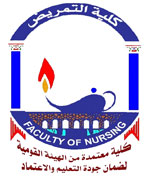The period of medical and nursing residency is a bottleneck because of the load of work,
training. patient's treatment, relations with senior professions, accommodation and other issues. A
two-years residency program similar to that of physicians was introduced recently in 1990 for the
graduates of the High Institute of Nursing (HlN) in Assiut University Hospital. 134 resident
physician and 71 HIN graduates included nurse residents were studied to focus the light on the
work status during residency program as perceived by them. All nurses and 16.4% of resident
physicians did administrative work. 97.0 % of resident physicians and 67.6% of nurses did patient
care. Only nurses do report and records writing. in addition to 18.3% did requests for maintenance
and cleaning. Physicians' were more tired from workload since only J 1.9% got enough sleep, on
contrary to nurses (31.0%). Only 4.5% of physicians and 7.0% of nurses did house officers and
internship nurses training. Most of resident physicians (70.1%) and 86.0% of nurses believe it is
unsatisfactory due to absence of a training program in the department, no enough time, and lack of
interest by house-officers and internship nurses. The main difficu lties encountered during
residency mentioned by resident physicians were: the huge number of patients and shifts (58.2%)
(p<O.OOI), patients ignorance (28.4%) (p<O.OOI), shortage of patient management resources
(28.4%), inefficient nursing (28.4%) (p<0.001) and administrative difficulties (19.4%). Difficulties
among nurses were: 42.3% lack of recognition, absence of job description (36.6%) (p<O.OOI),
shortage of nursing staff (35.2%) (p<O.OOl) and management resources (35.2%). Resident
physicians suggested an increase in the number of res ident physicians (49.3%), increase of
management resources (44.8%) (p<0.05), availability of job description (p<0.00 1) and an update of
nursing (p<O.OO I). Nurses gave more suggestions, mainly in the fonn of continuing education
(69.0%), available and documented job description (66.2%) (p<0.001). 50.7% suggested also the
increase of the number of resident nurses and another 32.4% suggested an increase of management
resources. The study recommended promotion of continuing education programs and
encouragement of in-service training particularly for nurses, employment of clerical staffs in
administrative and clerical posts, providing a unit manager who is responsible for non-nursing unit
activities. Also putting a program for training and education of house-officers and internship nurses
through the concerned departments and putting a job description for res ident nurses. The study also
recommends the establishment of an infection and accident control program because it was not
present.
Research Department
Research Journal
Egyptian Journal of occupational Medicine
Research Member
Research Rank
2
Research Vol
Vol. 24, No. 2
Research Year
2000
Research Abstract

